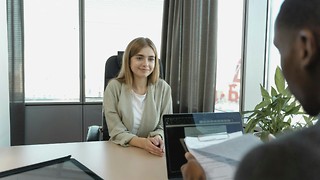LAND: Review
Jenni Caisley reviews LAND, the one night exhibition held at The Fountain on Thursday 13th June 2013.
LAND aimed to challenge artistic stereotypes. Described as being ‘about the voice, not the name’ on its Facebook page, the exhibition, held at the Loft, above the Fountain bar, intended to give art of all forms, regardless of an artist’s background or social circle, a space in which to be displayed.
Martha Perotto-Wills’ photographs of Uzbekistan focused on the concept of land as a physical entity. The vivid colours in the photographs, particularly bright blue as is common in Central Asia, brought the images to life. Her desire to show a different side of the country to that normally portrayed, concentrating on commonplace images rather than those of mosques and mosaics was an interesting one. The curatorial juxtaposition of her artistically composed, but unoriginal picture of a mosque and its minaret, with a ramshackle caravan highlighted the discrepancy between the Uzbekistan normally portrayed in Western culture, and that which is the reality for those in the country.
Less obviously linked to the concept of land but no less affecting were Bethan Kitchen’s (the event's curator) images. Reflecting the extent to which external appearance betrays internal feelings, her series of self-portraits, projected onto a wall in the exhibition, tracked her physical response to an emotionally turbulent event. Aside from being a fascinating diary of one woman’s reaction to emotional upheaval, they were a veritable catalogue of artistic styles and compositions. Some depicted daily activities such as brushing teeth, others showed her in a state of semi-undress and vulnerability, shot in black and white and blurred which created a surreal, and sometimes frightening effect.
Mark Wartenberg read his poem ‘Manscape’, which discussed the visceral aspects of day-to-day life in a series of imperatives. The violence inherent in the poem was conveyed in his reading, with the plosive consonants mirroring the aggression expressed in the occasionally cryptic formulations, such as ‘absorb black, secrete red’, which, according to Wartenberg, refers to the poet turning the pen away from the paper and instead gouging out his hand with it, releasing blood. Here, the body was a battlefield where the irreconcilable paradox between balancing a calm life of silence and an ecstatic frenzy clashes, creates a violence which is magnified and tears out of oneself.
Justina Kehinde Ogunseitan’s readings, focused on Africa and the concept of national identity were particularly dramatic. She performed from memory, which certainly helped the audience feel her conviction, and the different emotions which these expressed. The irony conveyed in the phrase ‘most courteous of you to give me a voice’ audibly dripped, and her physical involvement in the performance added to this.
All the artists I spoke to seemed to relish the opportunity to exhibit in a space that attempted to separate itself from establishment thinking. Daisy Hughes, whose piece superimposed poetry on top of a landscape photograph and discussed the north-south divide, said that the relaxed atmosphere and inclusive attitude made her feel ‘comfortable enough’ to display her work, and that exhibiting at LAND has made her consider the option of showing her pieces in what she termed a ‘more scary’ exhibition.
Although a non-conventional attitude is to be applauded, as far as inclusivity and broadening involvement are concerned, it would be helpful if some artist conventions were respected, such as introducing the poems before they were read, or at least, having this information displayed somewhere at the event. Small details, such as visible blu-tack, and impractical hanging of the work, for example, in front of a seating area, detracted from the atmosphere. If the collective want to be taken seriously, even if they do not want to be seen to be taking themselves seriously, these small but noticeable areas need to be improved. That being said, these were sufficiently minor concerns and hardly detracted from the generally high quality art on display. Although there’s room for a few small improvements, the collective has a strong foundation of ideas and concepts upon which to build for future events. They should be praised for their efforts in encouraging an open artistic discourse in Cambridge.
 News / Meta opens £12 million lab in Cambridge 11 July 2025
News / Meta opens £12 million lab in Cambridge 11 July 2025 News / Newnham students warned against using ‘secluded or concealed routes’ in evening after student followed16 July 2025
News / Newnham students warned against using ‘secluded or concealed routes’ in evening after student followed16 July 2025 Lifestyle / Reflections on rowing10 July 2025
Lifestyle / Reflections on rowing10 July 2025 News / Write for Varsity this Michaelmas13 July 2025
News / Write for Varsity this Michaelmas13 July 2025 News / University applies for extension to injunction against protesters 15 July 2025
News / University applies for extension to injunction against protesters 15 July 2025








